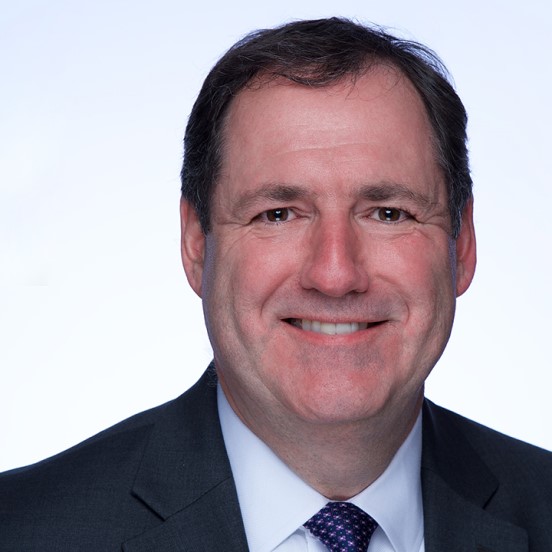Our countdown reveals what our readers cared about during what was undoubtedly one of the most challenging years to work in healthcare. Behind the scenes, the world of health IT stayed highly engaged and forward focused. The pace of innovation hastened, private and public entities rose to the challenge, and the issues that were critical pre-COVID garnered more attention in some cases and took on an even deeper significance. And we witnessed in collective awe the resiliency and relentlessness of our industry.
From opioids and e-prescribing to drug costs and the policies impacting patients and providers, it’s clear that patient safety, healthcare efficiency and all-around satisfaction were top of mind. And our readers ultimately sought the stories that brought these issues and their fellow humans into clearer focus.
We’re counting down the top ten Intelligence in Action articles of 2020 and sharing insights on what resonated and why. What topics did the health IT industry seek out and study, even amid the many compounded challenges of the global COVID-19 pandemic?
10. Medication nonadherence is having a bigger impact than we once thought—but health plans have options that benefit both the patient and the bottom line.
Three Ways Health Plans Can Address Inefficiencies and Medication Adherence
As value continued to become the gold standard for health plan operations and decision-making, Andrew Mellin, MD, identified three areas of focus for increasing efficiency and medication adherence—while highlighting the clear connection between the two. He explains: “Research shows that patients who do not take their medication are more likely to be hospitalized, which is significantly more expensive than ambulatory patient care.”
9. Patients want to engage more deeply with their doctor on key issues like drug costs—even if it means finding a new one.
Patients Are Ready to Talk Dollars With Their Doctors
Our report in February, Prescription Price Transparency and the Patient Experience, helped bring patient perspectives into the conversation on medication affordability. Andrew Mellin, MD, highlighted how patients are no longer merely along for the ride—they want to be engaged copilots who make healthcare decisions that are both therapeutically and financially sound. He explains, “With more skin in the game than ever before, patients are becoming savvy, engaged and discerning consumers. They know that the name-brand drug with the $300 monthly price tag may not be the only option.”
8. Connecticut is living proof that e-prescribing mandates help prevent prescription opioid fraud and overdose deaths.
Changing the Script on the Opioid Crisis
Former pharmacist and Connecticut’s Director of Drug Control Roderick Marriott talked about the importance of mandating the use of e-prescribing and electronic prescribing for controlled substances. He explains, “We had seen a couple of instances of prescription drug fraud with drug fraud rings that were potentially moving prescriptions illegally throughout our state—usually opioids.” By requiring the use of electronic prescribing for controlled substances, policymakers and prescribers have begun to make a dent in the state’s outsized opioid problem—and other states are following suit.
7. Technology and information-sharing save patients from having to split medication doses.
Price Transparency: It’s in the Best Interest of Patients and Providers
Longtime healthcare colleagues Andrew Mellin, MD, and Sharon Howard sat down to share stories about the real-world impact of prescription price transparency or lack thereof. As drug costs continue to rise, the issue of medication affordability can become more uncomfortable and revealing for patients who are quietly struggling financially. And the inability to afford out-of-pocket costs puts them in a dangerous and demoralizing spot.
6. When it comes to responding to the nation’s worsening opioid epidemic, the world of health IT policy is not for the faint of heart—nor the impatient.
Five Questions: Ken Whittemore Talks Past, Present & Future of E-prescribing Controlled Substances
Advocate and policy influencer Ken Whittemore Jr. has spent his career observing the intersections of legislation and e-prescribing. From educating the U.S. Drug Enforcement Administration (DEA) to deciphering and distilling 300-plus page regulations for healthcare organizations and providers across the country, Ken continues to be a catalyst of positive change and a bridge-builder amongst the entities who can bring it to fruition.
5. Policymakers increasingly recognized the value of real-time benefit tools and CMS made them a requirement for Part D.
Right Around the Corner: 2021 Cms Rule Requiring Real Time Benefit Tools
With legislators understanding that real-time benefit tools (RTBTs) can save health plans $795 million and the overall commercial healthcare industry $3.7 billion annually, the power and necessity of prescription price transparency became clear. In 2019, the Centers for Medicare & Medicaid Services (CMS) issued its final rule requiring that Part D plans use at least one RTBT. As the January 1, 2021, deadline approached, Surescripts Chief Innovation Officer Mike Pritts was there to break it down and share tips for choosing a technology that’s both compliant with the rule and effective in delivering accurate price transparency information to the point of prescribing.
4. Physicians acknowledge their role in both clinical efficacy and affordability, and one shares how she builds the drug cost conversation right into care planning.
The Exam Room Is a Sacred Space: How One Doctor Broaches Prescription Costs
Physicians and other prescribers are looking for a way into the sometimes-uncomfortable drug cost conversation. And most acknowledge the link between medication cost and medication adherence. Dr. Michelle Forbes of MD Pediatric Associates shared how she incorporates the topic of cost naturally, seamlessly, and as part of the care plan (before it becomes a problem at the pharmacy). She explains, “I’ll say something like ‘There's a medication I'd like to prescribe, but before I do, I'd like you to look at something with me. I can show you your specific cost for the medication. If that doesn't work with your budget, we can look at alternatives.’”
3. Tom Skelton’s 2020 prediction themes retained their relevance even after March.
2020 Predictions: the Health It Year Ahead
Despite a year made infamous by intense social unrest, otherworldly natural disasters and an unprecedented global healthcare crisis, our CEO’s insights held up. Trust as a competitive differentiator was tested in real time as breach attempts increased during the pandemic (#1). The U.S. Department of Health and Human Services (HHS) published the 21st Century Cares Act Final Rule and extended the compliance dates for information blocking rules (#2). Opioid prescribing indeed became smarter (#6) as CMS affirmed the importance of implementing a key EPCS mandate as planned rather than delaying. The notion of pharmacies as care delivery sites (#7) is very much on the table as the fight against COVID-19 continues into 2021. And as for “consumer-oriented digital health services?” Skelton’s vision that they’d be “challenged to mature” seems almost eerily accurate given the exponential increase in the utilization of virtual care since the pandemic took hold.
2. Patients are still our #1 motivator.
5 Questions: Michelle Trombetta on Improving the Patient Experience and the Power of Vulnerability
The one thing we all have in common is the patient. Their experience is why we’re all here, and at some point, we’re patients too. That’s why stories like Surescripts Director of Product Innovation Michelle Trombetta’s $210 pharmacy surprise resonate. And it’s why Trombetta keeps a framed picture of her niece who has a rare genetic disorder on her desk. A deep concern for patients is what drives her to show up for her team with both bravery and vulnerability in a crisis, and to influence them to be compassionate and dedicated to the patient experience no matter what.
1. Stories about real people and their experience with American healthcare still move us.
How One Small-town Pharmacist Is Growing His Business With Heart-led Care
It took just a few moments to connect with the people of Blackwell, Oklahoma (population 6,600), and Clark Bishop, their beloved independent pharmacist and the owner and manager of Hutton Pharmacy. Through a combination of compassion, collaboration and innovation, Bishop has found ways to survive and even grow. Hutton’s e-prescribing transaction volume has increased by 20% and front-of-house retail sales have doubled. From the photo essay: “The Hutton family planted this tree,” says Bishop, “and now I'm the one living underneath it, but I'm still trying to make it grow. The tree is going to look very different when I'm done with it, but it's still going to be providing that shade.”
Visit Intelligence in Action to stay informed and engaged with the issues impacting healthcare.


 Dean Riggott Photography
Surescripts
Dean Riggott Photography
Surescripts












